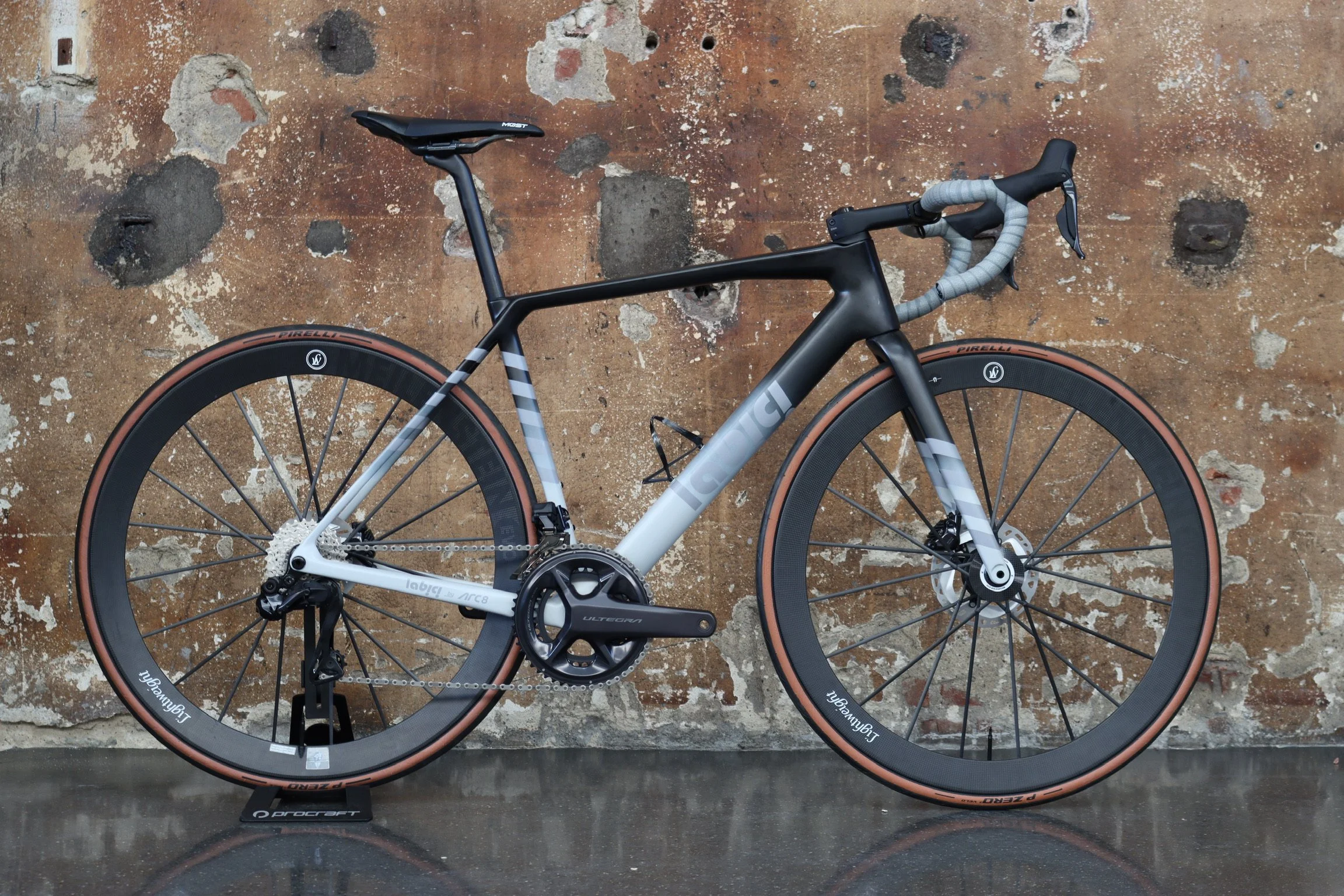Race or Gravel Bike - What is the right bike for me?
Executive Summary
Carbon road bikes and gravel bikes have gained immense popularity in the cycling community due to their specialized designs, tailored for specific terrains and riding styles. Road bikes, optimized for speed and smooth pavement, are a go-to for competitive cyclists and long-distance riders. Gravel bikes, however, bridge the gap between road and off-road cycling, offering a more versatile option for mixed surfaces. This article breaks down the differences between carbon road bikes and gravel bikes, examining their build, design, riding styles, and performance characteristics to help cyclists make informed decisions about which bike best suits their needs.
---
1. Frame and Geometry: Speed vs. Versatility
Road Bike Geometry
Carbon road bikes are designed with aerodynamics and speed in mind. The frames are typically lightweight, stiff, and streamlined to reduce drag and enhance speed. With a more aggressive riding position (low handlebars and elongated top tubes), road bikes allow riders to maintain a forward-leaning stance that reduces air resistance and maximizes efficiency on smooth, paved roads. The steeper angles in the frame promote responsive handling, making road bikes ideal for sprinting and fast cornering.
Gravel Bike Geometry
Gravel bikes, on the other hand, feature a more relaxed geometry. The frame often has a slacker head angle and a longer wheelbase, providing greater stability on rough or uneven surfaces. This relaxed position also places the rider in a more upright stance, which enhances comfort during long rides on mixed terrains. Gravel bikes may also have a slightly higher bottom bracket to clear obstacles like rocks or roots, further emphasizing their versatility.
Key Takeaway:
Road bikes are built for speed with an aggressive geometry that optimizes performance on smooth, paved surfaces.
Gravel bikes prioritize stability and comfort, offering a more upright position and versatility for off-road use.
2. Tires: Thin and Slick vs. Thick and Knobby
Road Bike Tires
Road bikes typically come equipped with narrow, slick tires ranging from 23mm to 28mm in width. These thin tires reduce rolling resistance, enabling cyclists to achieve higher speeds on paved surfaces. The smooth tread on road bike tires offers minimal grip since the emphasis is on reducing friction for faster, more efficient rides.
Gravel Bike Tires
Gravel bikes use wider tires, usually between 35mm and 50mm, depending on the model and rider preference. These tires are designed for traction on loose gravel, dirt, and uneven terrain. Many gravel bike tires have knobby treads for enhanced grip, although some models also come with semi-slick tires for riders who favor a faster ride on mixed surfaces. Wider tires can be run at lower pressures, improving comfort and traction over rough terrain.
Key Takeaway:
Road bike tires are thin and smooth, ideal for minimizing resistance on pavement.
Gravel bike tires are wider and more robust, providing grip and comfort on mixed and off-road surfaces.
3. Gearing: High-Speed Precision vs. Versatile Range
Road Bike Gearing
Road bikes are generally equipped with high-gear ratios to optimize for speed. This allows riders to maintain high cadence on flat roads and downhill sections. Typical gear setups include compact double chainrings (e.g., 50/34T) with tightly spaced cassettes (e.g., 11-28T). The focus here is on precise shifting for seamless transitions during rapid sprints or hill climbs.
Gravel Bike Gearing
Gravel bikes are equipped with a wider range of gears to handle various types of terrain. Single or double chainrings with larger cassettes (e.g., 11-42T) are common, allowing riders to tackle both steep off-road climbs and faster flat sections. The gear ratios on gravel bikes provide more versatility for mixed-terrain riding, ensuring that riders have both the low-end torque for steep, loose climbs and the high-end speed for flat roads.
Key Takeaway:
Road bike gearing is designed for high-speed precision on flat and hilly roads.
Gravel bike gearing offers a wider range to handle the variability of mixed terrain.
4. Brakes: Caliper vs. Disc Brakes
Road Bike Brakes
Most modern road bikes are equipped with either rim brakes (caliper brakes) or disc brakes. Rim brakes are lightweight and effective on smooth, dry pavement but can struggle in wet conditions. However, disc brakes, particularly hydraulic ones, are becoming more common due to their superior stopping power and reliability in varied weather conditions.
Gravel Bike Brakes
Gravel bikes almost exclusively use disc brakes—specifically hydraulic disc brakes—for their superior performance on mixed terrains. Disc brakes provide consistent stopping power even in mud, rain, or gravelly conditions, making them essential for off-road riding. Additionally, disc brakes allow for the use of wider tires, which are standard on gravel bikes.
Key Takeaway:
Road bikes may have rim or disc brakes, but disc brakes offer superior all-weather stopping power.
Gravel bikes primarily use disc brakes, which are necessary for off-road and mixed-terrain riding.
Accessories and Mounting Options: Minimalist vs. Adventure-Ready
Road Bike Accessories
Road bikes are generally built with a minimalist philosophy, focusing on speed and lightweight performance. Mounting points for racks or bags are rare, and riders typically carry minimal gear, relying on sleek saddle bags or water bottle cages. This setup suits riders who prioritize speed and lightweight builds over long-distance touring or cargo transport.
Gravel Bike Accessories
Gravel bikes are built for adventure and often come with a wide range of mounting options for racks, panniers, frame bags, and extra water bottle cages. This makes them ideal for bikepacking, long-distance touring, or simply carrying more gear for extended rides. The versatility of gravel bikes in this regard reflects their multi-purpose design, suited for both off-road exploration and practical commuting.
Key Takeaway:
Road bikes are minimalist, focusing on speed and lightweight performance.
Gravel bikes come equipped with multiple mounting options for bags and accessories, ideal for adventure and long-distance rides.
Conclusion: Which Bike is Right for You?
The choice between a carbon road bike and a gravel bike depends on your riding style, terrain, and specific needs as a cyclist.
Choose a carbon road bike** if your primary goal is to ride fast on smooth, paved roads. These bikes excel in speed, responsiveness, and efficiency, making them perfect for road racing, long-distance rides on tarmac, or fast group rides.
Choose a gravel bike if you need a more versatile option that handles mixed terrains, from city streets to off-road trails. Gravel bikes are ideal for riders looking to explore beyond paved roads, enjoy bikepacking adventures, or simply want a comfortable and adaptable bike for various riding conditions.

